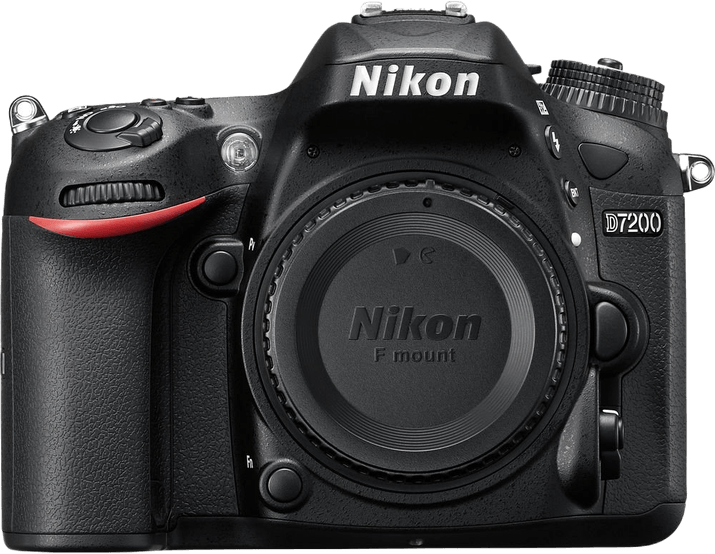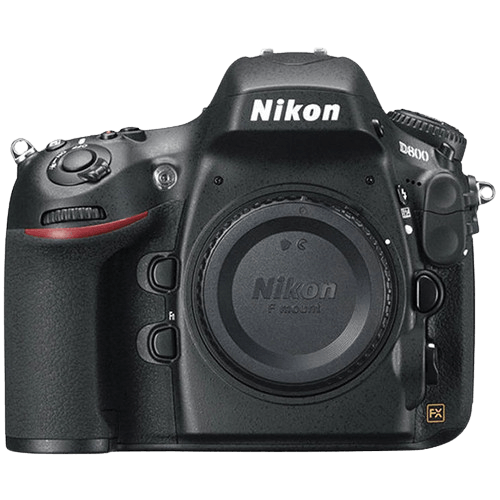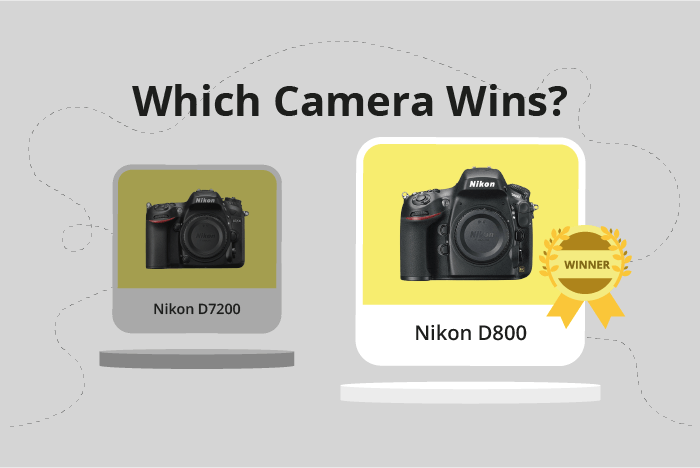Nikon D7200 vs D800 Comparison
Nikon D7200

Nikon D800

The Nikon D800 edges out the Nikon D7200 by a slim margin, scoring 69/100 compared to the D7200’s 68/100. Both cameras are DSLRs, released in 2012 and 2015, respectively. They share similarities in their design and function, but each has its unique advantages.
The Nikon D7200 is lighter at 765g and smaller at 136 x 107 x 76mm, making it more portable than the D800, which weighs 1000g and measures 146 x 123 x 82mm. Additionally, the D7200 has a lower launch price of $1200, compared to the D800’s $2999, making it a more budget-friendly option.
On the other hand, the Nikon D800’s higher score means it offers better performance in certain areas. However, the one-point difference in score suggests that both cameras are quite similar in overall quality. As such, the choice between the two models will ultimately depend on the user’s priorities and preferences, considering factors such as size, weight, and price.
Nikon D7200 vs D800 Overview and Optics
The Nikon D800 wins the optics comparison with a score of 74/100, while the Nikon D7200 follows closely behind with a score of 71/100. Both cameras share some common specifications, such as having a CMOS sensor, no image stabilization, and a Nikon F lens mount. However, the D800 surpasses the D7200 in certain aspects, while the D7200 has its own advantages as well.
The Nikon D800’s superiority in optics is evident in its higher megapixel count of 36.3, compared to the D7200’s 24.2 megapixels. This allows the D800 to capture more detail and produce higher resolution images. Additionally, the D800 has a full-frame sensor, which is larger than the D7200’s APS-C sensor. This results in better low-light performance and a shallower depth of field. The D800 also has a higher DXOMARK score of 95, indicating a better overall sensor performance.
On the other hand, the Nikon D7200 has a faster shooting speed of 6 frames per second, compared to the D800’s 4 frames per second. This makes the D7200 more suitable for capturing fast-moving subjects and action scenes. Moreover, the D7200 is equipped with a more advanced Expeed 4 processor, which leads to faster image processing and better overall performance.
To sum up, the Nikon D800 is the winner in optics due to its higher resolution, larger sensor, and better sensor performance. However, the Nikon D7200 holds its ground with a faster shooting speed and a more advanced processor. Ultimately, the choice between these two cameras depends on the user’s priorities and specific photography needs.
Nikon D7200 vs D800 Video Performance
The Nikon D7200 emerges as the winner in the video capabilities comparison with a score of 70/100, while the Nikon D800 trails behind with a score of 57/100. Both cameras share some common video specifications, such as Full HD video resolution (1920 x 1080) and built-in time-lapse functionality.
The D7200 outperforms the D800 in terms of maximum video frame rate, offering 60fps compared to the D800’s 30fps. This higher frame rate allows the D7200 to capture smoother and more detailed video, especially during fast-paced action or sports events. The increased frame rate can also provide more flexibility in post-production, such as slowing down footage for slow-motion effects without losing quality.
On the other hand, the D800 does not have any significant advantages in video capabilities over the D7200. Both cameras offer the same maximum video resolution and dimensions, as well as time-lapse functionality. The lower video score of the D800 primarily results from its lower maximum frame rate.
Taking all of these points into consideration, the Nikon D7200 stands out as the superior choice for video capabilities due to its higher maximum frame rate, providing smoother and more detailed footage. The Nikon D800, while still offering Full HD resolution and time-lapse functionality, falls short in comparison due to its lower frame rate. Therefore, for users prioritizing video performance, the Nikon D7200 is the clear winner.
Nikon D7200 vs D800 Features and Benefits
The Nikon D7200 triumphs over the Nikon D800 with a feature score of 59/100 compared to 57/100. Both cameras share several specifications, including a 3.2-inch screen size, no touchscreen, no flip screen, no GPS, Wi-Fi capability, and no Bluetooth. Despite these similarities, there are differences that make one camera stand out over the other.
The Nikon D7200 holds an advantage with its higher screen resolution of 1,228,800 dots compared to the D800’s 921,000 dots. This higher resolution provides a clearer and more detailed image preview, making it easier to review and edit photos on the camera itself.
On the other hand, the Nikon D800 does not have any specific features that make it better than the D7200. Its lower feature score reflects this, as it does not offer any additional capabilities or improvements over the D7200. It is important to note that the score does not affect the quality of the camera, but reflects its overall performance and features.
Taking all these factors into account, the Nikon D7200 is the superior camera due to its higher feature score and screen resolution. The Nikon D800 does not offer any advantages over the D7200, making it a less appealing option for photographers. Considering the specifications and performance of both cameras, the Nikon D7200 is the better choice for those looking to capture high-quality images with a user-friendly and feature-rich camera.
Nikon D7200 vs D800 Storage and Battery
The Nikon D7200 outperforms the Nikon D800 in storage and battery with a score of 79 to 71. Both cameras share common specifications, including two memory card slots that accept SD, SDHC, and SDXC cards. They also use the same EN-EL15 battery type and lack USB charging capabilities.
The D7200 has a longer battery life, providing 1110 shots compared to the D800’s 900 shots. This advantage makes the D7200 more suitable for extended shooting sessions without the need for frequent battery replacements or recharging.
On the other hand, the D800 offers an additional feature in terms of storage, as it is compatible with Compact Flash cards in addition to SD, SDHC, and SDXC cards. This compatibility may be beneficial for photographers who prefer using Compact Flash cards or have an existing collection.
Taking into account these factors, the Nikon D7200 is the better choice for those prioritizing longer battery life, while the Nikon D800 caters to photographers who value Compact Flash compatibility.
Nikon D7200 vs D800 – Our Verdict
Are you still undecided about which camera is right for you? Have a look at these popular comparisons that feature the Nikon D7200 or the Nikon D800:

